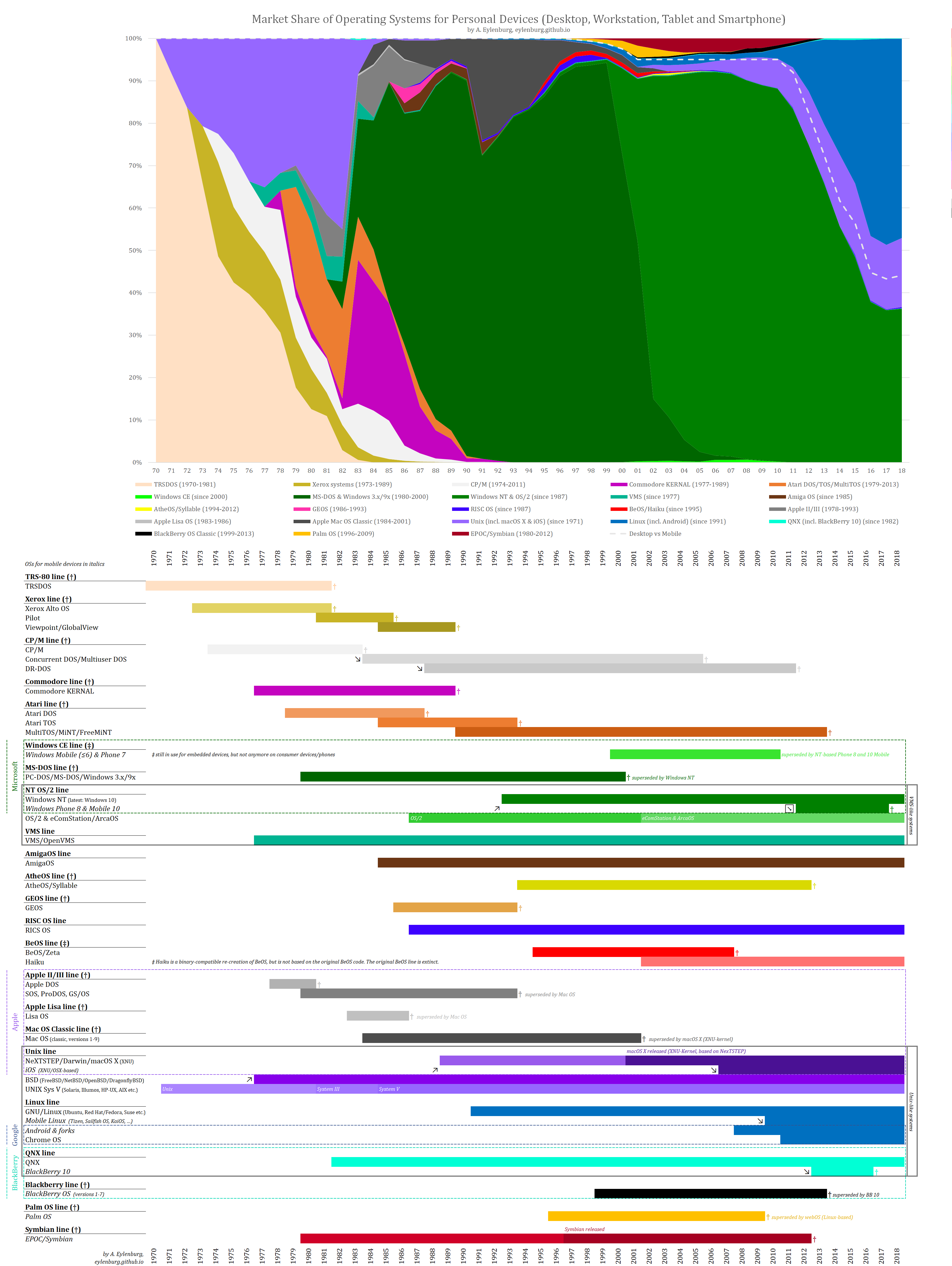Last updated: 2018
The below diagram shows the historical market shares of operating systems across personal devices (meaning "workstations", "PC", desktops, laptops, tablets and smartphones, but excluding for example servers). At the bottom you will see a short genealogy of the major "consumer" operating systems. Many historical operating systems families are long dead, some other are somehow still alive but barely so or have stopped not targeting the personal computing or workstation market anymore.
In some cases, the old OS name has been kept even though its successor was a completely different product, technologically speaking. This includes Windows (versions up to Win 98 and Win ME based on MS-DOS, versions since Win 2000 based on NT), Blackberry OS (version 10 based on QNX), and macOS (version 10 based on the Unix-like Nextstep).

Click here to open the picture in a new tab
Due to a lack of reliable historical data a lot of extrapolation and educated guesses based on other data were needed. Newer data is available on Statcounter, while data is less easily available. For the really old stuff, you can sometimes find sales numbers of the different computers (I think there was an Ars Technica article I used) but it's also a lot of guess work. All of this was done a many years ago so please don't ask me for the raw data - I don't have it any more and I can't remember it in detail.